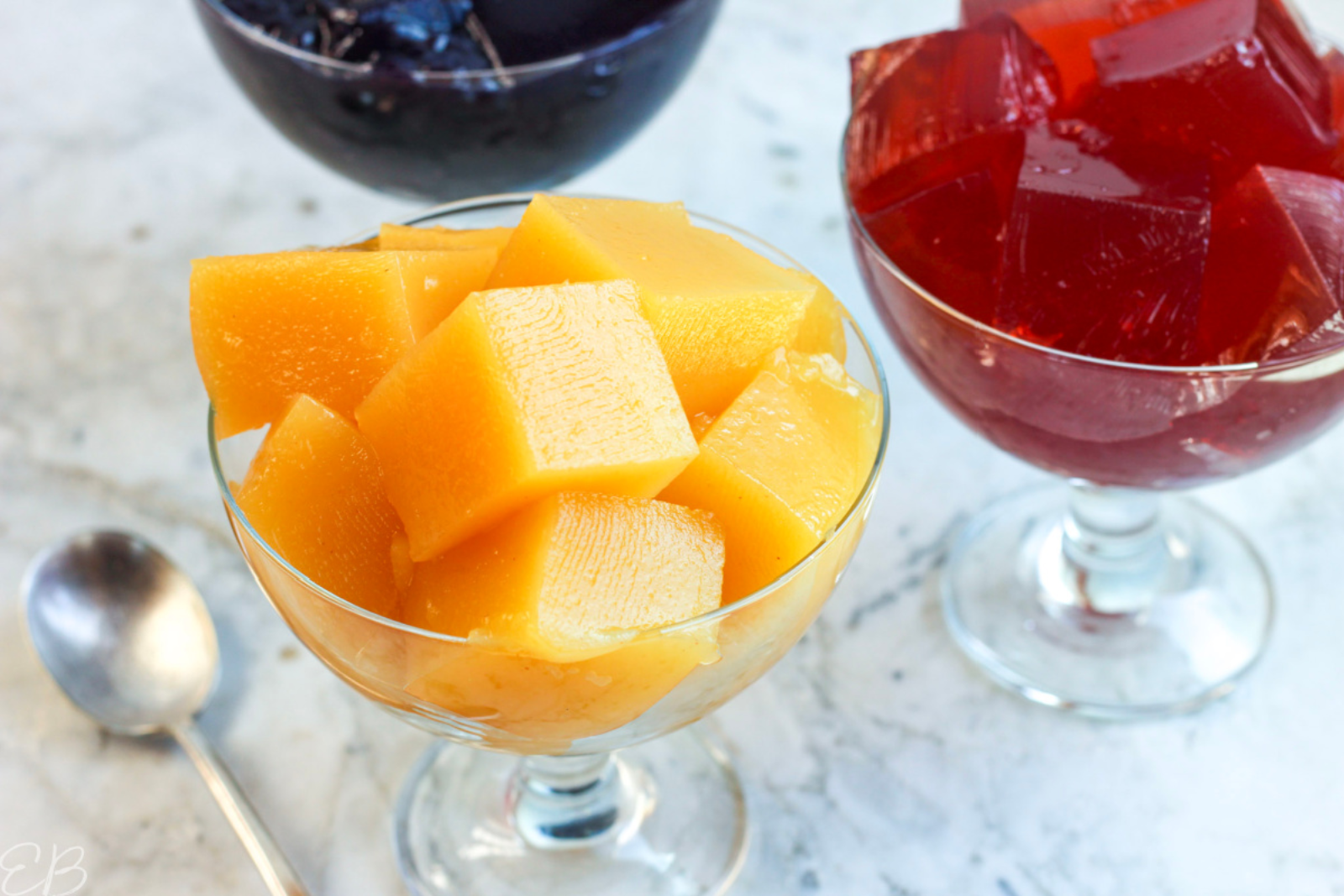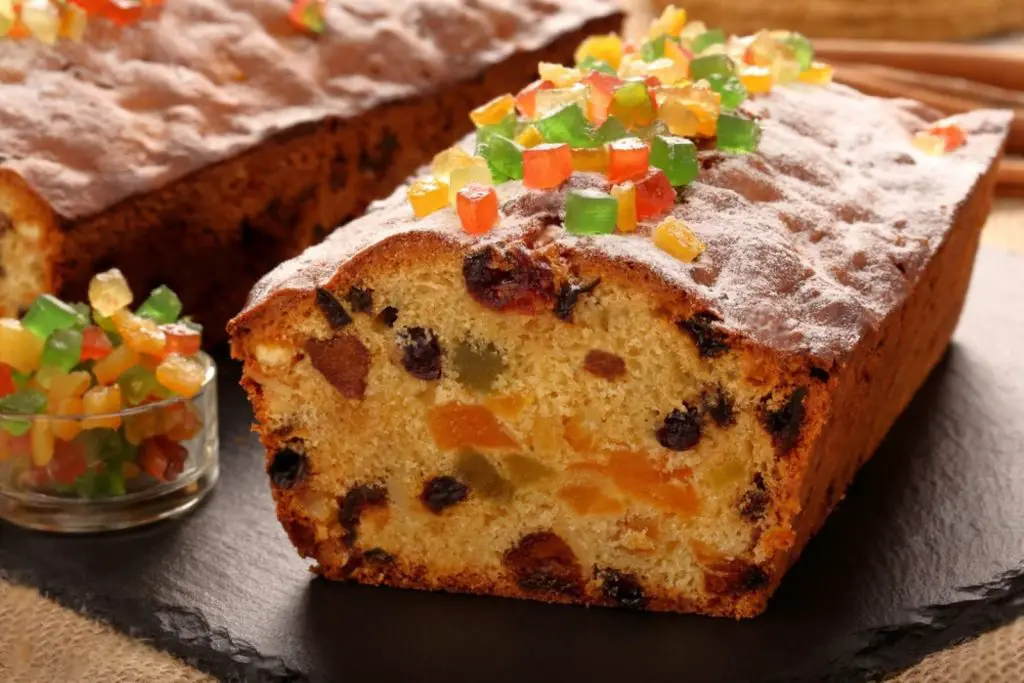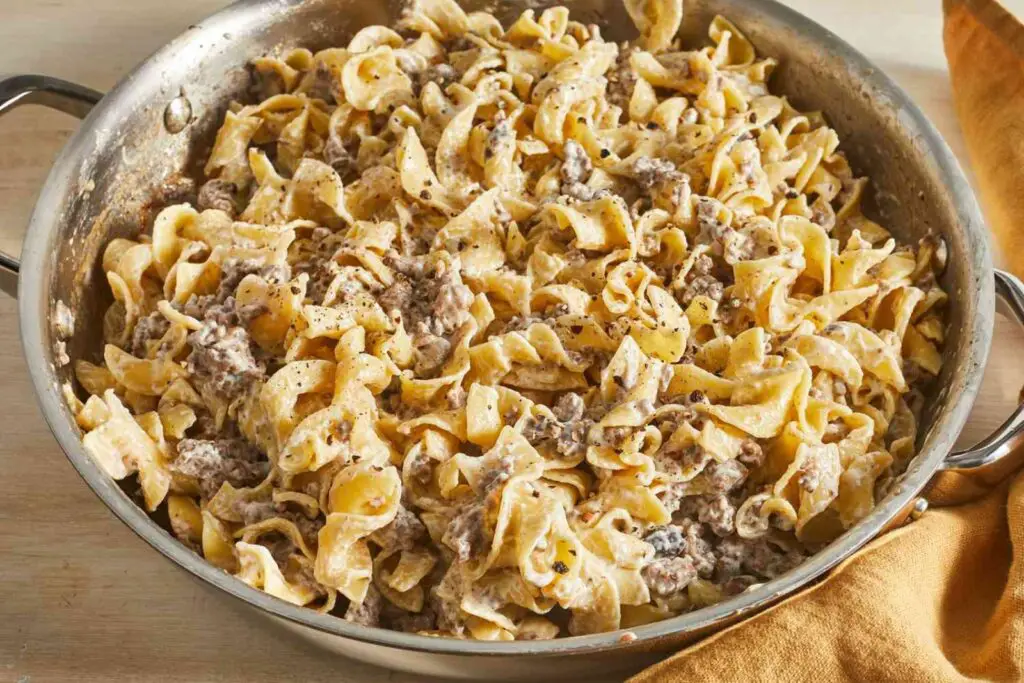
Jello is a popular gelatin dessert that comes in various flavors and colors. It’s enjoyed by people of all ages and is often served at parties, picnics, and other special occasions. While Jello is typically made fresh and served immediately, there may be times when you want to freeze it for later use. Freezing Jello can be a convenient way to prepare ahead of time or preserve leftovers. However, it’s essential to follow the right steps to ensure that the frozen Jello maintains its texture and flavor. This article provides a comprehensive guide on how to freeze Jello effectively for future enjoyment.
Here’s a step-by-step guide on how to freeze Jello:
Step 1: Prepare the Jello
To begin the process of freezing Jello, you need to prepare it following the instructions provided on the package. The exact instructions may vary depending on the brand and flavor of Jello you’re using, so it’s important to read and follow them precisely. Here’s a general explanation of the steps involved:
- Dissolve the Jello powder: In a heat-resistant bowl, empty the contents of the Jello powder packet. Typically, this involves pouring the powder into a bowl and adding boiling water. The amount of water required is usually specified on the package. Stir the mixture vigorously with a spoon until the Jello powder is fully dissolved. It’s important to dissolve all the powder to ensure a smooth and consistent texture in the final product.
- Add cold water: Once the Jello powder is completely dissolved, add the specified amount of cold water to the mixture. Again, the amount of water required is usually provided on the Jello package. Adding cold water helps to cool down the mixture and aids in the setting process.
- Stir and mix: After adding the cold water, continue stirring the Jello mixture gently to ensure that it is well combined. Make sure there are no lumps or clumps remaining in the mixture. This step helps to evenly distribute the Jello flavor and ensures a consistent texture once it sets.
- Optional additions: At this point, you can also add any optional ingredients or additions to the Jello mixture, such as fruit pieces, whipped cream, or other flavors. These additions can enhance the taste and presentation of the Jello. Follow the instructions or recipes provided if you choose to include any additional ingredients.
Step 2: Allow the Jello to cool
Once you have prepared the Jello mixture, it is essential to let it cool to room temperature before proceeding with the freezing process. Cooling the Jello is a crucial step that ensures proper setting and helps maintain its texture and quality after freezing. Here’s why it’s important:
- Setting process: Jello is a gelatin-based dessert that sets as it cools. When the Jello mixture cools down, the gelatin molecules in the mixture begin to interlock and form a network, giving Jello its characteristic firm yet jiggly texture. Allowing the Jello to cool gradually ensures that the gelatin sets uniformly throughout the mixture, preventing any uneven or lumpy texture in the final frozen product.
- Avoid temperature shock: Freezing hot or warm Jello can lead to undesirable results. Placing hot or warm Jello directly in the freezer can cause rapid temperature changes, which may affect the texture and structure of the Jello. It can result in ice crystals forming within the Jello, leading to a grainy or watery texture. By letting the Jello cool to room temperature first, you minimize the risk of temperature shock during the freezing process.
- Maintain flavor and freshness: Allowing the Jello to cool completely before freezing helps to preserve its flavor and freshness. If Jello is frozen while still warm, the flavors may become diluted or altered during the freezing and thawing process. Cooling the Jello allows the flavors to settle and develop fully, ensuring that the frozen Jello retains its original taste when thawed later on.
To cool the Jello, you can leave it at room temperature on the countertop. The cooling time will vary depending on the quantity and depth of the Jello mixture. It’s important to be patient and give it enough time to cool completely. Once the Jello has reached room temperature, it will be ready for the next steps in the freezing process.
Step 3: Choose suitable containers
When freezing Jello, it is important to select appropriate containers or resealable bags that are safe for freezer use. By choosing the right containers, you can ensure that the frozen Jello remains fresh and free from freezer burn. Here’s why it’s important and how to choose suitable containers:
- Freezer-safe containers: Use containers that are specifically labeled as freezer-safe. These containers are designed to withstand low temperatures without cracking or breaking. Freezer-safe containers are typically made of durable materials such as glass, plastic, or silicone that can handle the freezing and thawing process.
- Individual serving-sized containers: It is recommended to use individual serving-sized containers or divide the Jello into portions that you’re likely to use in one go. This allows you to thaw only the amount of Jello you need, reducing waste. It also makes it more convenient to grab a single serving from the freezer without having to defrost the entire batch.
- Resealable bags: Another option is to use resealable bags specifically designed for freezer storage. These bags are made with thick, durable materials that can withstand freezing temperatures. They are a good choice if you prefer a space-saving option or if you want to freeze Jello in a flatter shape that can thaw more quickly.
- Size and shape: Consider the size and shape of the containers based on your needs. If you plan to use the frozen Jello for individual desserts, choose containers that are suitable for single servings. If you intend to use the Jello for a larger dessert or to be molded into a specific shape, select containers that accommodate the desired size and shape.
When selecting containers, ensure they have tight-fitting lids or secure seals to prevent air and moisture from entering. This helps to maintain the quality of the Jello during the freezing process.
Can I use plastic sandwich bags to freeze Jello?
While it’s possible to use plastic sandwich bags to freeze Jello, it may not be the most ideal option. Plastic bags are more prone to punctures or leaks, which can result in a messy freezer. It’s recommended to use freezer-safe containers or resealable bags specifically designed for freezer use, as they provide better protection against leaks and maintain the quality of the frozen Jello.
Can I freeze Jello cups or gelatin cups?
Yes, you can freeze Jello cups or gelatin cups. Ensure that the cups are made of freezer-safe materials and have secure lids or covers. Follow the steps outlined in the article to properly freeze the Jello cups, leaving enough headspace for expansion during freezing.
Can I freeze Jello in silicone molds or ice cube trays?
Yes, you can freeze Jello in silicone molds or ice cube trays. Silicone molds are flexible and make it easy to remove the frozen Jello shapes. Follow the same steps for preparing and freezing Jello, pouring the mixture into the molds or ice cube trays instead of traditional containers. This allows for fun and creative Jello shapes for desserts or decorative purposes.
Step 4: Pour the Jello into containers
After the Jello has cooled to room temperature, it’s time to transfer it into the chosen containers for freezing. This step requires care and attention to ensure that the Jello is poured correctly and that the containers are appropriately filled. Here’s why it’s important and how to do it properly:
- Headspace for expansion: When freezing Jello, it’s crucial to leave some headspace in the containers to account for expansion during the freezing process. Liquids, including Jello, tend to expand when they freeze. Filling the containers to the brim can result in the Jello expanding beyond the container’s capacity, causing leaks or spills. Leaving sufficient headspace allows room for the Jello to expand without causing any issues.
- Prevent leaks and spills: Overfilling the containers with Jello increases the risk of leaks or spills during the freezing process. As the Jello freezes, it solidifies and can push against the lid or seal of the container. If the container is filled to the top, the Jello may overflow and create a mess in the freezer. By avoiding overfilling, you can prevent any potential leaks or spills, keeping your freezer clean and organized.
To pour the Jello into the containers:
- Use a ladle or a large spoon to scoop the cooled Jello mixture from the bowl.
- Pour the Jello carefully into the selected containers, starting from one corner to minimize any bubbles or splashing.
- Leave some headspace at the top of each container. The exact amount of headspace will depend on the size of the container and the specific freezing instructions provided on the Jello package. As a general guideline, leave about ½ inch (1.3 cm) of headspace to allow for expansion during freezing.
- Ensure that the containers are not overfilled or filled right up to the rim. This will help prevent any leaks or spills as the Jello freezes.
Remember to work slowly and deliberately while pouring the Jello to maintain control and avoid unnecessary messes. If needed, wipe any spills or drips from the container edges before sealing them.
Step 5: Seal the containers
After pouring the Jello into the containers, it’s important to seal them tightly to prevent air from entering. This step is crucial for maintaining the quality and freshness of the frozen Jello. Whether you’re using individual containers or resealable bags, ensuring a tight seal helps to prevent issues such as freezer burn and texture changes. Here’s why it’s important and how to do it effectively:
- Prevent freezer burn: Freezer burn occurs when air comes into contact with the surface of frozen food. It can cause dry spots, discoloration, and a change in texture. By tightly sealing the containers, you create a barrier that prevents air from reaching the Jello. This helps to preserve its moisture and flavor, minimizing the risk of freezer burn.
- Texture preservation: Air exposure can also affect the texture of the frozen Jello. When air interacts with the Jello, it can lead to crystallization or ice formation, resulting in a grainy or icy texture. By sealing the containers tightly, you create an airtight environment that helps maintain the smooth and gelatinous texture of the Jello.
To effectively seal the containers:
- If using individual serving-sized containers with lids, ensure that the lids fit securely onto the containers. Press down on each lid to ensure a tight seal. If the containers have locking mechanisms, make sure they are engaged correctly.
- If using resealable bags, remove as much air as possible before sealing them shut. Squeeze the bag gently, starting from the bottom, to push out any excess air. Once you have removed as much air as possible, seal the bag tightly.
- Double-check the seals to ensure they are secure and airtight. Run your finger along the edges of the lids or bags to confirm that they are properly sealed.
- If any containers or bags do not have a secure seal or show signs of damage, consider transferring the Jello to a different container or bag to ensure the best possible seal.
Step 6: Label and date the containers
Properly labeling and dating the containers of frozen Jello is essential for organization and ensuring freshness. By providing clear information on the date of freezing and the flavor of the Jello, you can keep track of the contents in your freezer and prioritize the oldest Jello for consumption. Here’s why labeling is important and how to do it effectively:
- Track freezing dates: Labeling the containers with the date of freezing allows you to keep track of how long the Jello has been stored in the freezer. It helps you prioritize the order in which you should consume the Jello, ensuring that you use the oldest ones first. This is particularly important because Jello can lose its quality over time, and consuming it within a reasonable timeframe ensures the best taste and texture.
- Flavor identification: In addition to the date, labeling the containers with the flavor of the Jello helps you quickly identify the specific variety you’re looking for. With multiple containers of different flavors, labeling prevents confusion and saves time when selecting the desired Jello.
To effectively label and date the containers:
- Use waterproof and freezer-safe labels or markers to write directly on the containers or bags. Make sure the labels adhere well and won’t smudge or wash off during freezing.
- Write the date of freezing in a clear and visible manner. Include the day, month, and year. For example, “July 12, 2023.”
- Write the flavor of the Jello next to the date. This can be as simple as writing the flavor name, such as “Strawberry,” “Lime,” or “Orange.”
- Place the labels in a visible area on the containers or bags, making it easy to identify the information at a glance.
Step 7: Place in the freezer
After properly sealing the containers or bags of Jello, it’s time to place them in the freezer for the freezing process to begin. The way you position the containers and the environment in which they freeze can affect the quality and texture of the Jello. Here’s why it’s important to handle this step correctly:
- Even freezing: Placing the sealed containers or bags on a flat surface ensures that the Jello freezes evenly. It allows the cold air in the freezer to circulate around the containers, promoting uniform freezing. This helps maintain the consistency and texture of the Jello throughout.
- Avoid stacking until fully frozen: It’s important to avoid stacking the containers or bags until they are fully frozen. Stacking them before freezing may cause the Jello to stick together or become misshapen, leading to difficulties in thawing and serving later on. Allow each container or bag to freeze individually before stacking them, if needed, to optimize freezer space.
To place the Jello containers in the freezer effectively:
- Clear a space in your freezer that is flat and large enough to accommodate the containers without crowding them. Remove any obstructions or items that could interfere with proper airflow.
- Carefully place the sealed containers or bags on the flat surface in the freezer, ensuring they are level and not tilted. Arrange them in a way that allows for adequate space between each container to promote airflow.
- If you have limited space, you can stack the containers or bags once they are fully frozen. However, avoid stacking them before freezing, as this can lead to unwanted sticking or misshaping of the Jello.
- Close the freezer door gently to avoid disturbing the containers’ position or causing any spills or shifts.
How long can I keep frozen Jello in the freezer?
Frozen Jello can generally be stored in the freezer for about 1 to 3 months. Beyond that time, the quality may start to deteriorate, and the texture may be affected. It’s best to consume the frozen Jello within the first few months for the best taste and texture.
Step 8: Thaw and serve
When you’re ready to enjoy the frozen Jello, it’s important to thaw it properly to ensure that it regains its original texture and maintains its quality. Thawing Jello should be done gradually and under controlled conditions to prevent uneven thawing and the risk of bacterial growth. Here’s why it’s important and how to thaw frozen Jello effectively:
- Gradual thawing: Thawing the frozen Jello gradually helps it regain its original texture and consistency. Rapid temperature changes can affect the structure of the Jello, leading to a loss of its desired jiggly and smooth characteristics. Gradual thawing allows the Jello to thaw uniformly, ensuring that it retains its original texture.
- Refrigerator thawing: The recommended method for thawing Jello is to place the desired amount in the refrigerator. The cool temperature of the refrigerator allows the Jello to thaw at a controlled rate. This slow and gentle thawing process helps the Jello maintain its texture and minimizes the risk of bacterial growth.
- Avoid room temperature thawing: It’s important to avoid thawing Jello at room temperature. Thawing at room temperature can lead to uneven thawing, where the outer edges thaw faster than the center. This can result in a loss of texture and affect the overall quality of the Jello. Additionally, room temperature thawing can create an environment conducive to bacterial growth, posing a potential health risk.
To thaw frozen Jello effectively:
- Remove the desired amount of frozen Jello from the freezer. If using individual serving-sized containers, you can thaw the specific number of servings you need.
- Place the sealed container or bag of frozen Jello in the refrigerator. Make sure it is placed on a plate or in a shallow dish to catch any potential drips as it thaws.
- Allow the Jello to thaw in the refrigerator for several hours or overnight, depending on the size and thickness of the frozen Jello. It may take longer for larger portions to thaw completely.
- Once the Jello has thawed, it will regain its original texture. Serve the thawed Jello chilled, as it is typically enjoyed.
Other related questions
Can I refreeze Jello?
It is generally not recommended to refreeze Jello once it has been thawed. Freezing and thawing Jello can affect its texture and consistency, resulting in a less desirable final product. Additionally, repeated thawing and refreezing can increase the risk of bacterial growth and compromise the quality and safety of the Jello. It is best to consume the thawed Jello promptly and avoid refreezing it.
How do I know if the Jello has gone bad after being frozen?
To determine if frozen Jello has gone bad, there are a few signs to look out for. Firstly, if the Jello has developed an off-putting odor or unusual taste, it may indicate spoilage. Additionally, if there are visible signs of mold growth or a change in texture, such as becoming grainy or watery, the Jello should be discarded. It is important to trust your senses and err on the side of caution when assessing the quality of frozen Jello.
Can I freeze Jello made with fresh fruits or other add-ins?
Yes, you can freeze Jello that contains fresh fruits or other add-ins. However, keep in mind that the texture of the fruits may change upon freezing and thawing. It’s best to choose fruits that freeze well, such as berries or diced fruits, and expect some softening or texture changes in the add-ins.
Can I use thawed Jello in recipes or desserts?
Thawed Jello can be used in certain recipes and desserts. However, keep in mind that the texture and consistency may be different from freshly made Jello. Thawed Jello is generally best suited for applications where the texture change is not a significant concern, such as incorporating it into fruit salads or using it as a filling for cakes or pies.
Can I freeze sugar-free or low-calorie Jello?
Yes, you can freeze sugar-free or low-calorie Jello just like regular Jello. Follow the same steps outlined in the article for preparing and freezing the Jello. Keep in mind that the texture of sugar-free or low-calorie Jello may differ slightly from regular Jello due to the absence of sugar or reduced calorie content.
Can I freeze Jello with whipped cream or toppings?
It’s not recommended to freeze Jello with whipped cream or other toppings. Whipped cream can separate and lose its texture when frozen, leading to an undesirable result. If you plan to use whipped cream or other toppings, it’s best to add them after thawing the Jello.
Can I freeze Jello made with gelatin substitutes?
Jello made with gelatin substitutes, such as agar-agar or carrageenan, can be frozen following the same steps as regular gelatin-based Jello. However, keep in mind that the texture and consistency of Jello made with substitutes may differ from traditional gelatin-based Jello.
Can I freeze Jello made with fresh lemon juice or other citrus fruits?
Yes, you can freeze Jello made with fresh lemon juice or other citrus fruits. Citrus fruits can add a refreshing flavor to Jello. Just keep in mind that the texture of the fruits may change upon freezing and thawing. Choose citrus fruits that freeze well, such as lemon or lime segments, for the best results.
Can I freeze Jello that has been mixed with yogurt or cream?
It’s not recommended to freeze Jello that has been mixed with yogurt or cream. Dairy-based ingredients like yogurt or cream can separate or become grainy when frozen, resulting in an undesirable texture. If you want to incorporate yogurt or cream into Jello, it’s best to add them after thawing the Jello.








